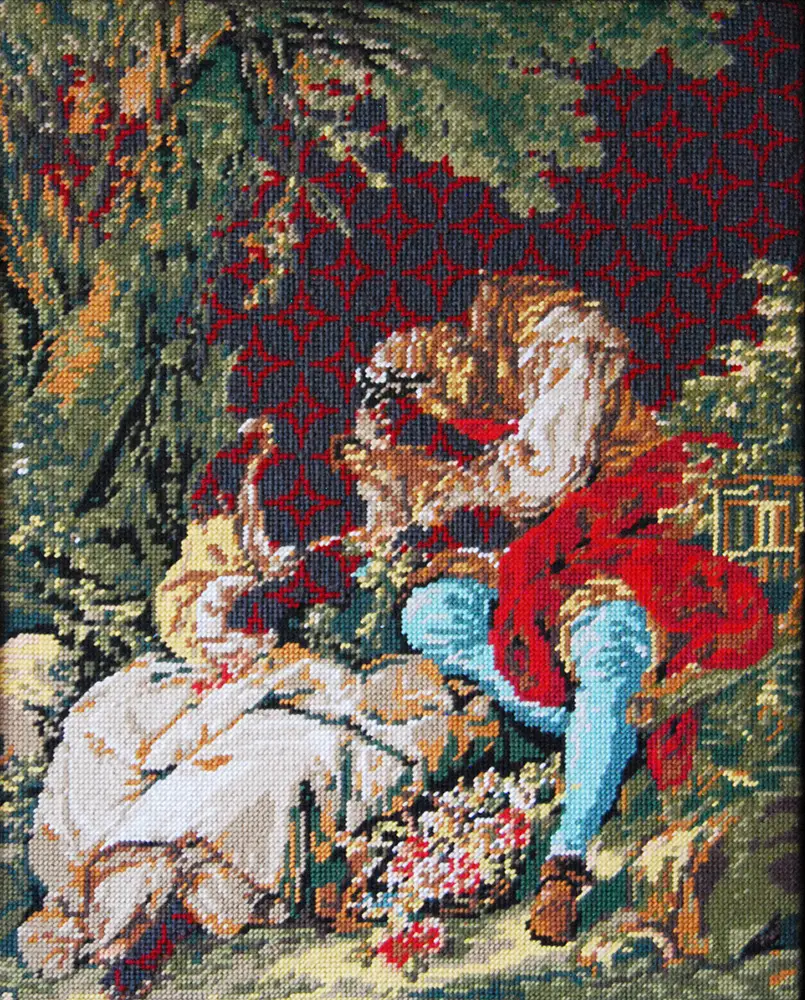Welcome to Textile Encounters, where we discover the textile and embroider traditions from all corners of the world. This time we explore the work of Margaret Lee.
Margaret Lee is an Australian-based practitioner and renowned teacher of Chinese Embroidery. She specialises in Su Embroidery which uses delicate silk shading to create remarkably refined images of the natural world.
“Unlike in the West, Chinese embroidery has always been viewed as an art form as opposed to a craft. In this respect, there has been continuous innovation in the stitching techniques resulting in the ongoing development of the art whilst maintaining the ancient tradition. This has left us with a legacy that is as relevant today as it was a thousand years ago. Such a rich tradition deserves to be maintained and further developed into the future.” Margaret Lee

Malaysian-born Margaret Lee grew up in a traditional Chinese family where she was taught embroidery by her mother and grandmother. A career in corporate banking did not diminish her interest in embroidery and after moving to Adelaide, Australia in 1996, Margaret had the opportunity to devote more time to her beloved art form and received her teacher accreditation in both Chinese and Japanese embroidery.

The term ‘Chinese embroidery’ refers to the vast variety of embroidery styles and techniques practised in China.
Four main styles are practised today in different parts of the country:
- Su (from Suzhou)
- Shu (from Sichuan),
- Xiang (from Hunan)
- Yue (from Guangzhou)
Although there are significant overlaps in technique, the styles are distinctly different and are influenced by the geography, environment, traditions and customs of each area. Historically Su embroidery was the style of choice for the royal wardrobe and decorations in the imperial household.

Su embroidery is Margaret’s style of choice. It is well known for its elegance and delicate needlework techniques and is the epitome of “painting with silk thread.”

Mastering the techniques of silk embroidery is only part of becoming an embroidery artist, according to Margaret. Combining the wisdom she learnt from her mother, the information she gathered from embroidery masters and her own experience in mastering the technique, Margaret concludes that these five characteristics are an essential part of becoming a true embroidery artist:
- An analytical approach to design and embroidery – it is not just how you do it, but the way you commit to your embroidery.
- Attitude – the best embroideries are produced by those with a passion and commitment to the art. The process should be regarded as creating art and not just as a piece of needlework.
- Patience – ‘near enough is not good enough.’ Working with intricate techniques and fine silk threads cannot be rushed.
- Observance – making mental notes of colours, movement, shapes, lights and shadow, animals, landscapes and people is as important as learning stitch techniques.
- Practice – there are no shortcuts to virtuosity. The techniques are not difficult but to understand their characteristics, application and relevance require a development period of practice.

Margaret only works with pure Chinese filament silk from the Bombyx mori moth species. Silk filaments in its continuous form are reeled off the silk cocoon and used in single strands or in thicker clusters of up to eight strands. Layering these fine strands of colour to achieve depth and dimension is a skill that only comes with good instruction and years of practice. Filament silk’s versatility and sheen are unique. Unlike other threads like cotton or wool which is cellular and absorbs light, silk is a protein and reflects light, resulting in the characteristic glossy lustre.

Margaret teaches Su silk embroidery in Australia and abroad. She also published a book The Art of Chinese Embroidery – Foundation Level, which covers the beginner skills and techniques needed to become a Chinese silk embroidery artist.

Margaret is a master of embroidery. She is passionate, warm and thoroughly professional in her own art as well as in teaching this refined art form to others. If you ever have the opportunity to see her work or learn from her, grab it with both hands. You will learn so much more than just stitching.
Visit Margaret’s website to learn more about her work and teaching schedule.




